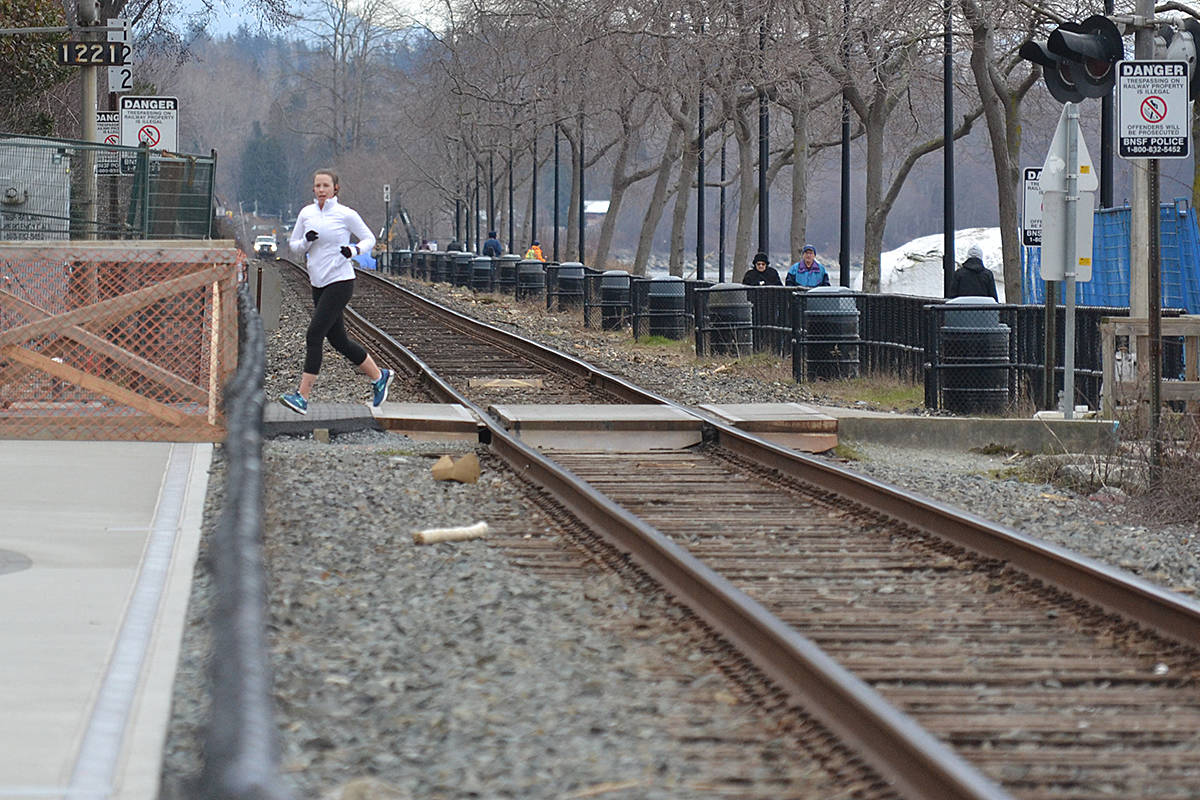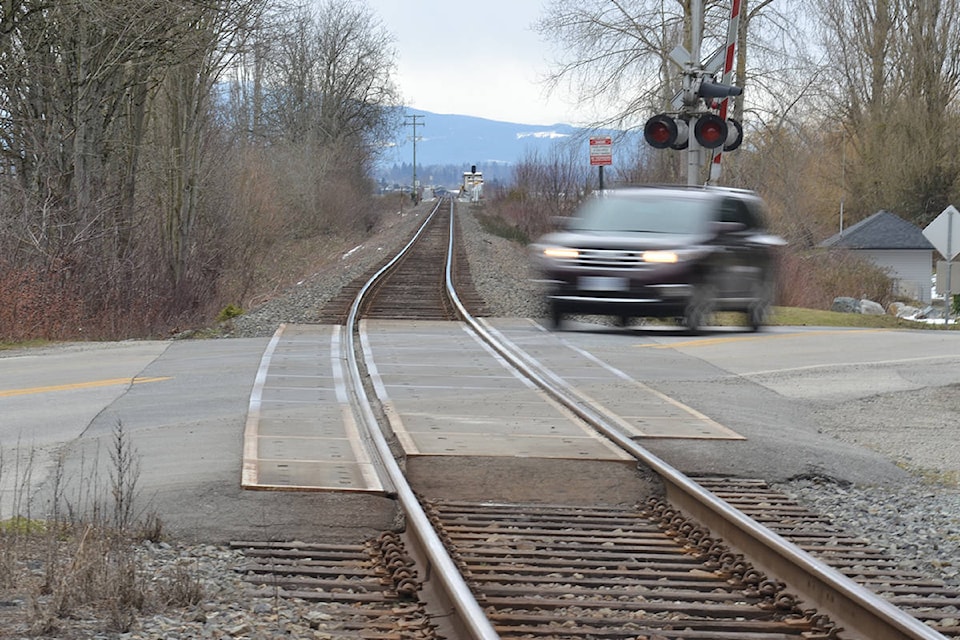Safety and emergency preparedness continue to be pressing concerns with regard to BNSF’s waterfront rail route, according to Semiahmoo Peninsula Citizens for Safety, Trade and Recreation (SEMSTAR).
The group, which has publicly advocated for relocation of the rail route, took a first opportunity to make a presentation to Surrey’s new council on Monday.
Members Erik Seiz and Hannah Newman noted that UDE incidents (undesired emergency brake applications) have continued to plague trains in the South Surrey area, particularly at the sharp 24 Avenue track curve – and such stoppages mean both access points to Crescent Beach are blocked for extended periods.
According to an email to Seiz from Surrey fire chief Len Garis the latest incident was in the early morning hours of Feb. 17, resulting in blockage of the Beecher Street and McBride Avenue crossings while crews ‘broke’ and re-coupled the train.
The statistical probability of such incidents – which SEMSTAR has been tracking, and which are considered a contributing factor to train derailments – is even more significant considering the volume of traffic, with trains going through the Peninsula every hour, Seiz said.
“The story’s changed a lot from, say 15 years ago,” he told council. “It used to be just a sleepy little train on a sleepy little track, and now it is the prime corridor for trade between B.C. and the U.S.”
“Trains are quite long and the track was never really designed for that, so what we have is some issues that don’t take place anywhere else.
“And what we have, because of the topology of the area, is a lot of slides that happen on this location.”
Pointing to aerial footage of a mudslide that took place Jan. 13, Seiz said that for the last five years the line has been impacted by 15 similar slides along the railway.
By moving to a track alignment along the Highway 99 corridor, Seiz suggested, the risk of slides and UDE incidents would be eliminated and train speed could be increased to result in a 10-minute journey, bypassing White Rock and Crescent Beach, as opposed to the current 40-minute travel time along the waterfront.
“We’re not suggesting the track should move, or that it move immediately. What we’re saying is that it’s time to, at least, consider what the future might hold. Whether it’s in five years or 50 years, at some point in time we have to lift our heads up and go, what does this mean down the road?”
In light of current excitement about a future high-speed rail route, Seiz suggested that Surrey could look at urging the province to thoroughly investigate, by feasibility study, the possibility of allowing room for a freight line in a future high-speed corridor.
“At least making sure we don’t do something foolish in terms of the very long-term.”
Mayor Doug McCallum said staff would report back to council on the presentation.
On Wednesday, Newman said she felt the meeting was a “good first step” in communicating with the new council.
“I thought it went well, and even though they said they wouldn’t ask questions (in council-in-committee) they asked two anyway,” Newman said.
“The last time we had a formal interaction with Surrey council was in 2016,” she added. It’s a necessary step with this council, because they’re all new and we don’t know their position on this, and they need to understand the liability issues. It triggers the process that staff has to report back to them, and that was our goal. It’s in the system now, and we never really went that route before.”

